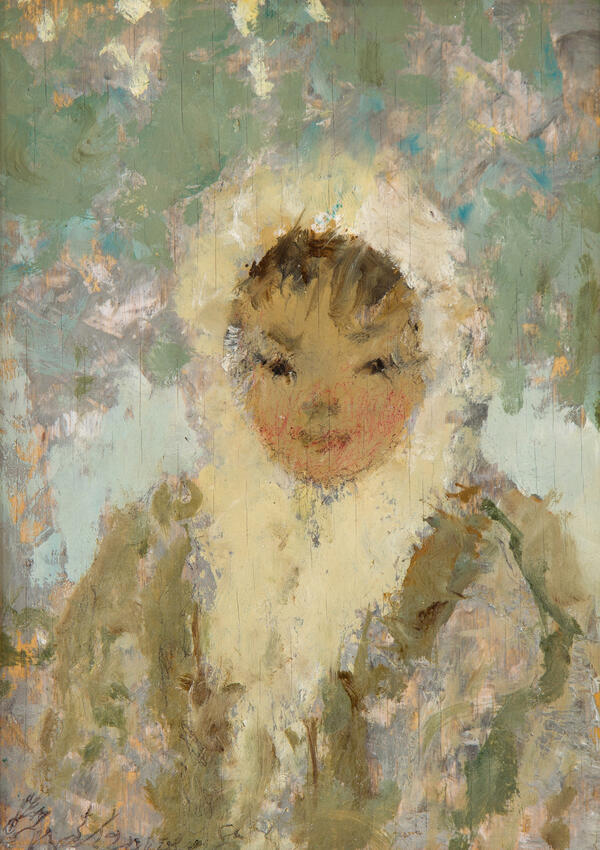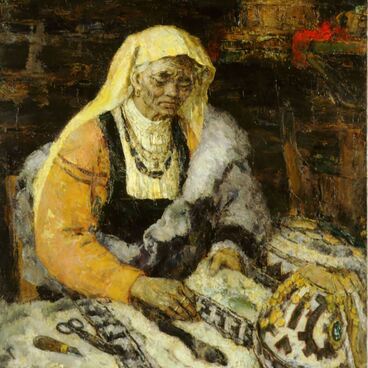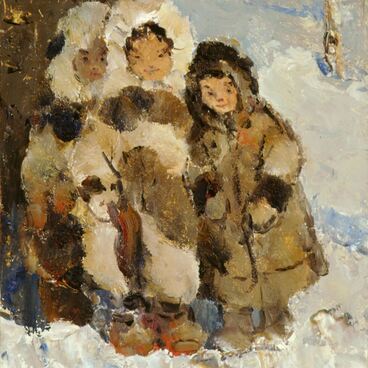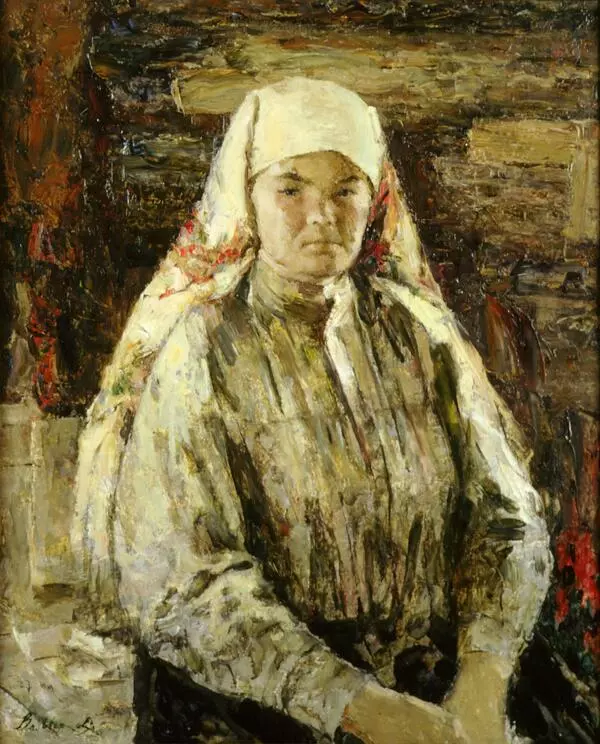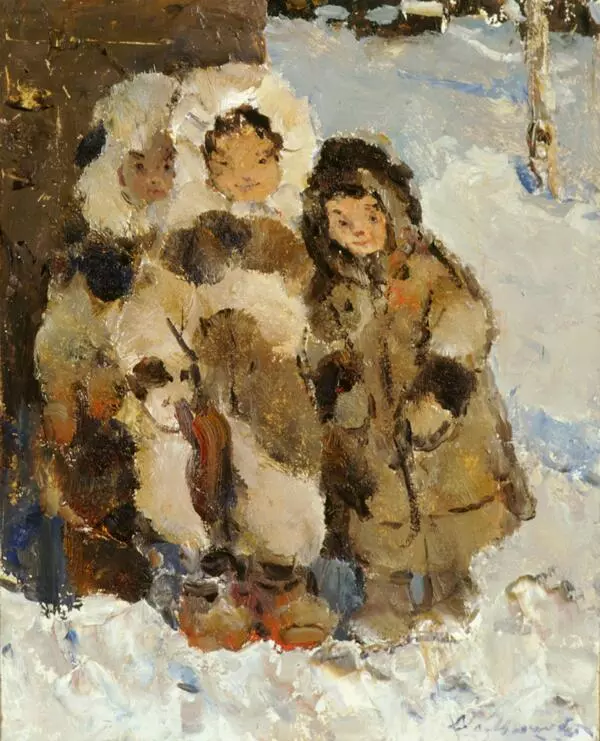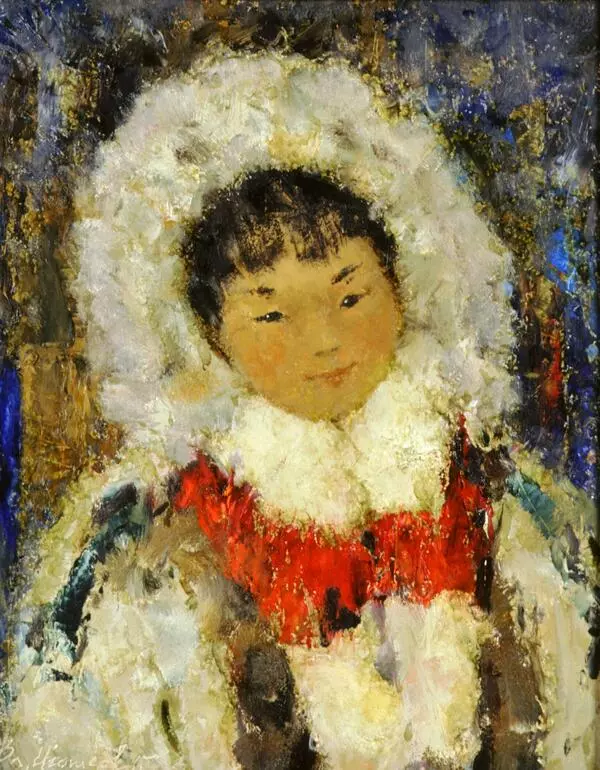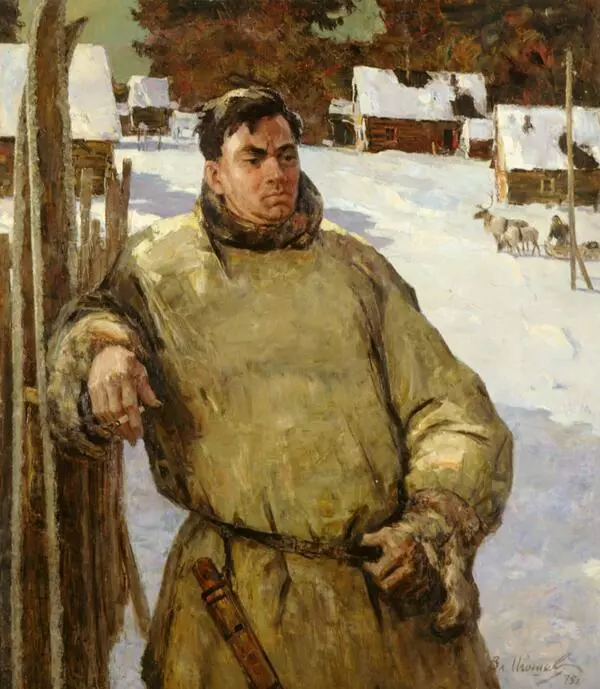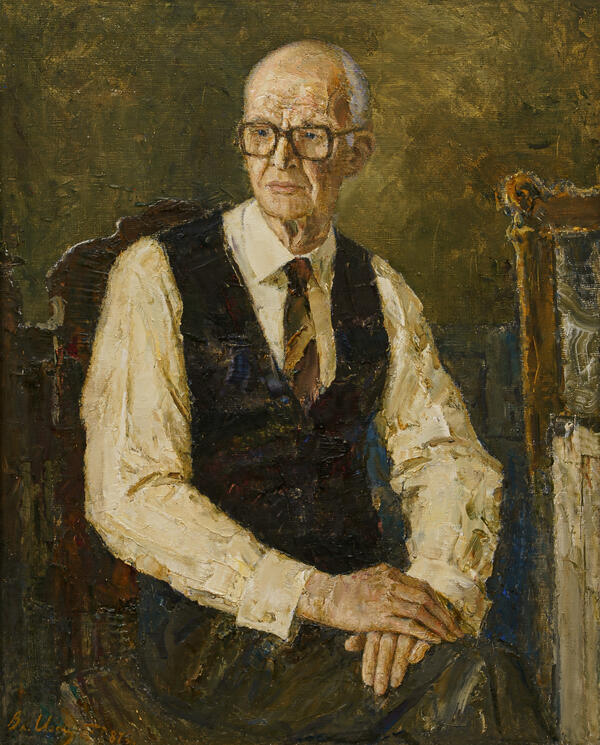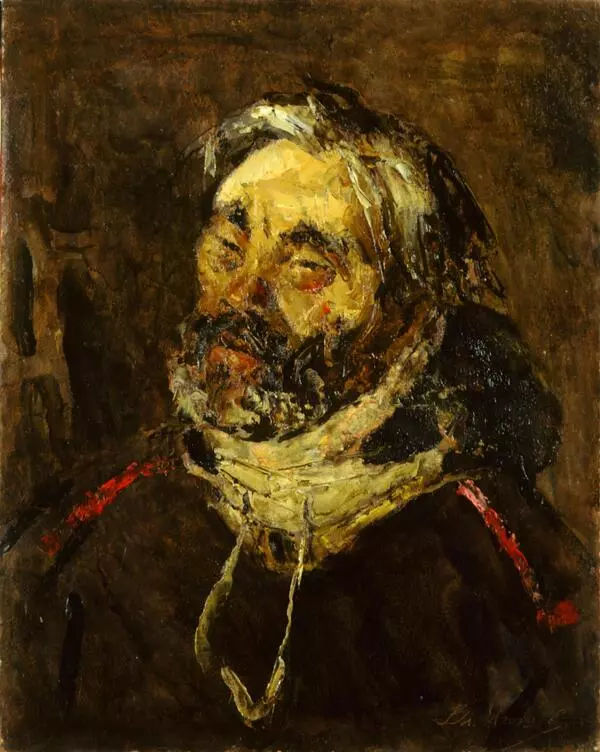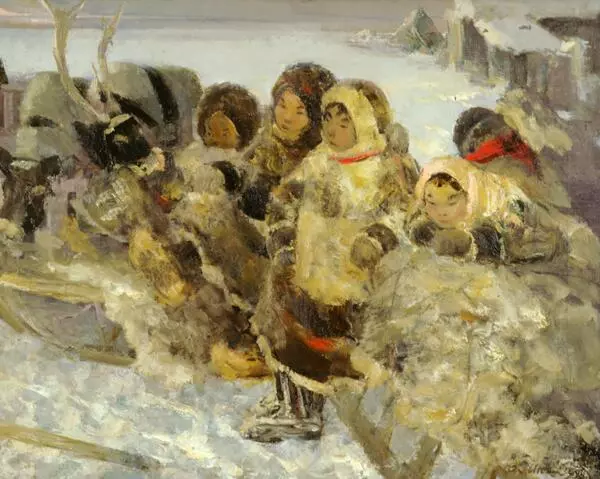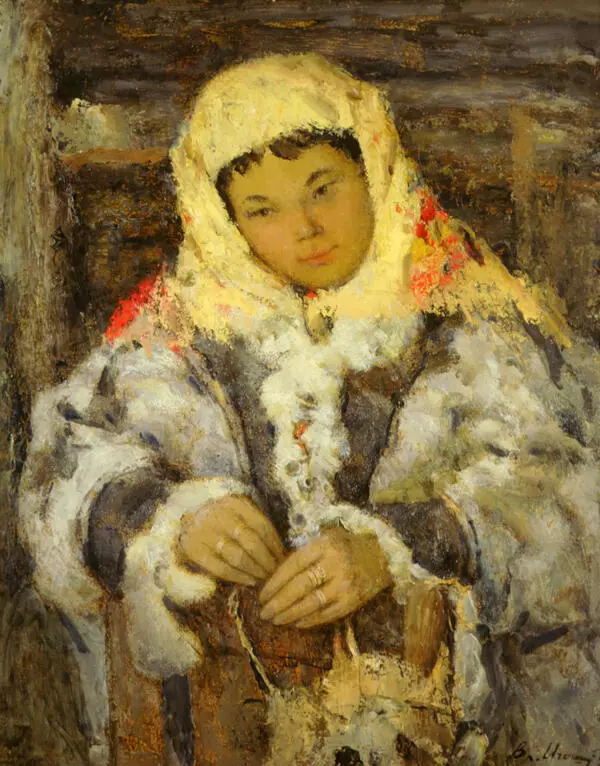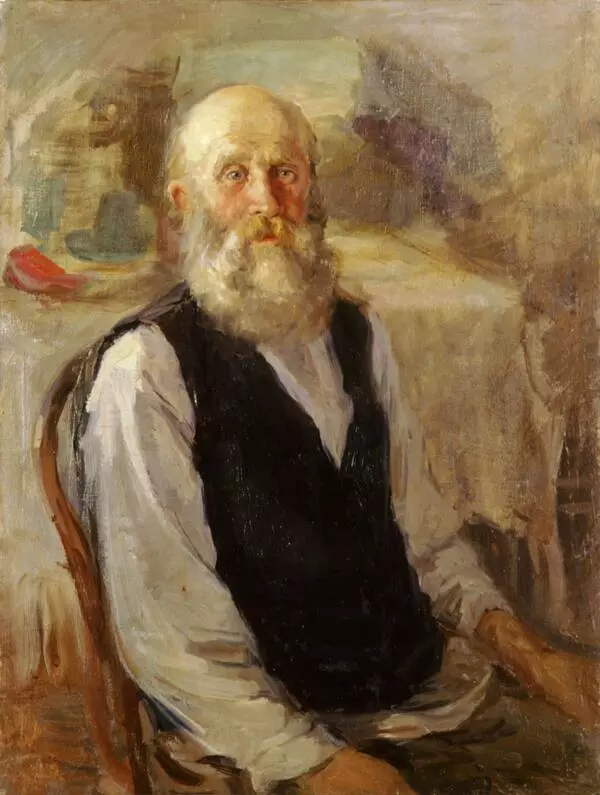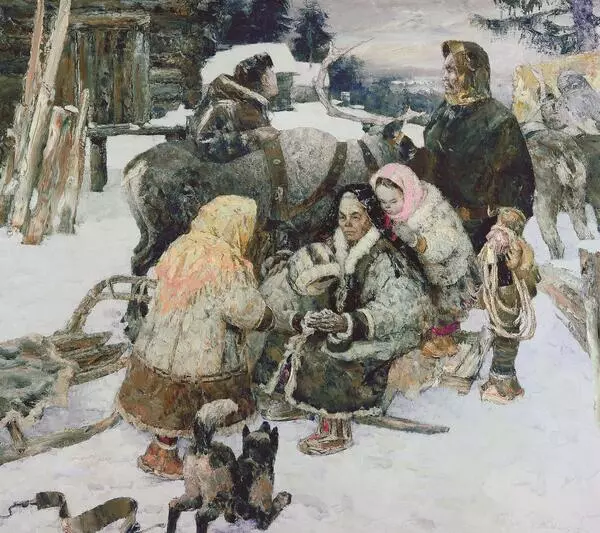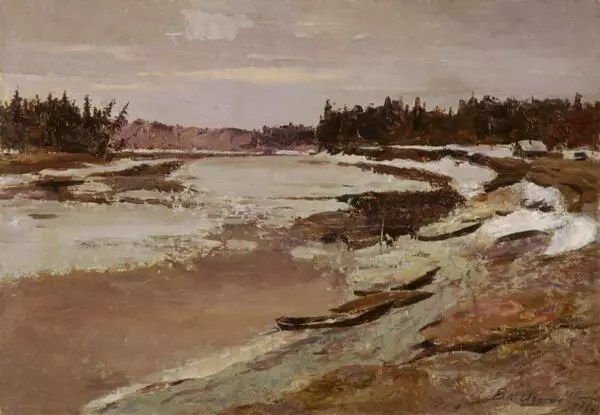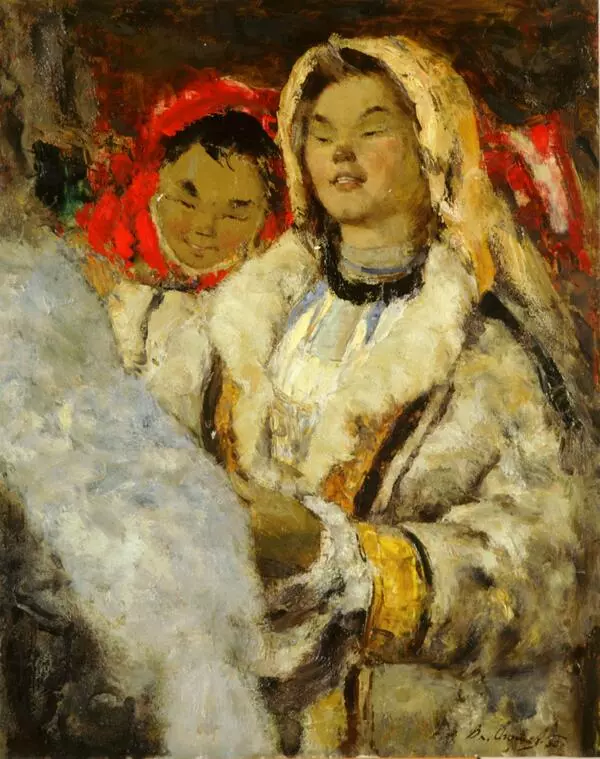Impressionism was one of the major art movements from the last third of the 19th century till the early 20th century, which appeared in France and got widespread all around the world. The representatives of the style tried to elaborate the methods that could help them depict the world naturally and strikingly and show their own impressions. Usually the term impressionism is used to define the works of visual arts, but its ideas touched literature as well.
Vladimir Igoshev often used impressionist techniques. He wrote: ‘Who did I learn from? Loosely speaking, I got the idea from the Wanderers and manner of painting from impressionists. By Russian impressionists I mean Serov, Surikov, Korovin. Nesterov and his poetry of the Russian soul greatly influenced me.’ Some of the landscapes and portraits were painted with sketchy and seemingly incorrect brush strokes, which show the vibration of light and its reflections. The paintings have no definitive outline; the image is literally made of multiple colourful brush strokes. Igoshev used to say he preferred not to make paintings based on the sketches. Instead he started from the brightest point and the conceptual part of the painting and then arranged the composition around it and worked on the colour scheme.
The painter used various materials. He painted on canvas, cardboard, paper. The oil and ink portrait Taiga Dweller was painted on the wooden panel.
Igoshev created this work at the age of 77. In the bottom-left corner is the signature of the painter. His handwriting lacks its former firmness, however, in the portrait the brush work is very precise.
Since ancient times wood has been used as a painting surface. The first coat of paint was applied to the unpolished wooden board. In such a way the material looked better, stayed longer and didn’t exfoliate. In rare cases the paints were applied directly to the surface. Usually it was required to prepare the board, to fix it, to apply the first coat of paint etc. If the storage conditions don’t meet the standards of temperature and humidity, even the thoroughly elaborated wood can cast and bend.
Vladimir Igoshev often used impressionist techniques. He wrote: ‘Who did I learn from? Loosely speaking, I got the idea from the Wanderers and manner of painting from impressionists. By Russian impressionists I mean Serov, Surikov, Korovin. Nesterov and his poetry of the Russian soul greatly influenced me.’ Some of the landscapes and portraits were painted with sketchy and seemingly incorrect brush strokes, which show the vibration of light and its reflections. The paintings have no definitive outline; the image is literally made of multiple colourful brush strokes. Igoshev used to say he preferred not to make paintings based on the sketches. Instead he started from the brightest point and the conceptual part of the painting and then arranged the composition around it and worked on the colour scheme.
The painter used various materials. He painted on canvas, cardboard, paper. The oil and ink portrait Taiga Dweller was painted on the wooden panel.
Igoshev created this work at the age of 77. In the bottom-left corner is the signature of the painter. His handwriting lacks its former firmness, however, in the portrait the brush work is very precise.
Since ancient times wood has been used as a painting surface. The first coat of paint was applied to the unpolished wooden board. In such a way the material looked better, stayed longer and didn’t exfoliate. In rare cases the paints were applied directly to the surface. Usually it was required to prepare the board, to fix it, to apply the first coat of paint etc. If the storage conditions don’t meet the standards of temperature and humidity, even the thoroughly elaborated wood can cast and bend.

